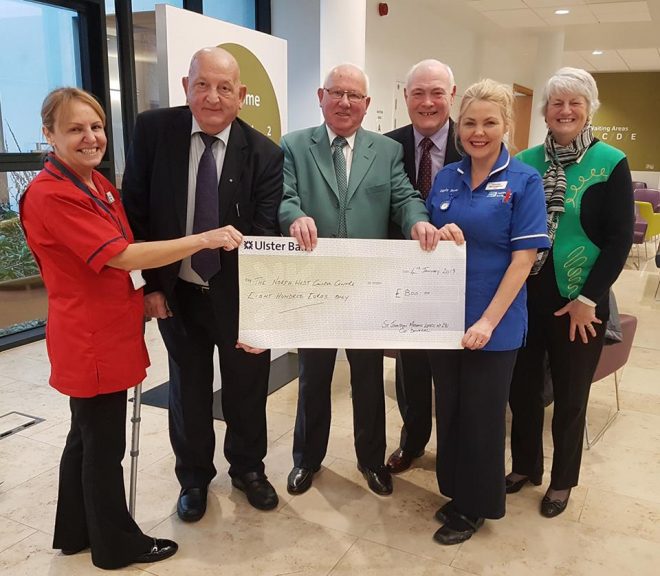The Rhythm of Masonic Life
“Going dark” – a phrase familiar to every Mason, yet one that carries deeper significance than many realise. For those outside our Craft, it simply means our lodge suspends regular meetings during the summer months. Here at St Johnston 281, like lodges across Ireland and beyond, we observe this ancient tradition that sees us close our doors from June through September, returning refreshed when autumn arrives.
This practice isn’t merely about convenience or holiday schedules. It reflects something far more profound – the natural rhythm that has governed Masonic life for centuries. Our operative forebears understood that there was a season for every purpose under heaven, and just as they laid down their tools when winter made building impossible, we too recognise that there are times for gathering and times for personal reflection.
Understanding the Dark Season
The tradition of going dark has its roots in practical necessity. In centuries past, when most brethren were involved in agriculture or trades dependent on daylight, the summer months brought demands that made evening meetings difficult. Harvests needed gathering, long daylight hours called for extended work, and family obligations took precedence. The lodge understood this rhythm and adapted accordingly.
But there’s more to it than mere practicality. The cyclical nature of Masonic learning mirrors the seasons themselves. Just as the earth lies fallow to renew itself, so too must the Mason step back from regular lodge activities to allow deeper understanding to take root. The symbolic significance of darkness and light, so central to our Craft, plays out literally in this annual cycle.
In our Lodge 281, we’ve observed this pattern for generations. The darkness isn’t an absence but a different kind of presence – a time when the inner work of Masonry continues in quieter, more personal ways.
The Inner Work Continues
While our lodge room may be silent, the true Mason knows that the work never truly stops. The dark months offer a precious opportunity for personal study and reflection that the busy lodge calendar often doesn’t allow. This is the time to revisit those fundamental Masonic texts that shaped our understanding as newly made brothers, to see them now with more experienced eyes.
Consider the symbols we encounter regularly in our ceremonies at Lodge 281. How often during the active season do we rush past the deeper meanings, caught up in the rhythm of ritual and the demands of lodge business? The dark period invites us to sit quietly with these emblems, to contemplate the working tools, to meditate on the significance of our sacred geometry.
This is the season for moral inventory, for honest self-examination away from the social dynamics of the lodge room. The questions that matter most – Am I living up to the principles I’ve sworn to uphold? How can I better serve my brethren and my community? – these require the kind of sustained reflection that only quiet months can provide.
Practical Activities for the Dark Period
The dark months need not be empty ones. With proper protocols and permissions, this is an ideal time to visit other lodges, to experience different traditions and learn from brethren beyond our own circle. Many lodges across Ulster and beyond remain active during summer, offering opportunities for fraternal exchange.
Masonic conferences and educational events often cluster around this period, recognising that brethren have more time for extended learning. The summer months provide space for deeper study – perhaps tackling that challenging Masonic text you’ve been meaning to read, or exploring the historical development of our ritual and ceremony.
For the brethren of St Johnston 281, this might mean delving into our own lodge’s rich history, understanding how our predecessors navigated the challenges of their times. The dark period offers space for such contemplation without the pressures of regular lodge duties.
Maintaining Brotherhood Bonds
Lodge meetings may cease, but brotherhood endures. The dark months often see some of the strongest bonds formed through informal gatherings – a meal shared, a conversation over coffee, or a quiet visit to a brother who might be struggling. These connections, formed away from the formality of the lodge room, often prove the most enduring.
This is particularly important for our elderly brethren or those facing health challenges. The summer months can be isolating for some, and a phone call or visit from a brother can make all the difference. Such acts of kindness embody the true spirit of Masonry more than any formal ceremony.
Community service and charitable work continue throughout the dark period. Indeed, freed from the demands of regular meetings, many brethren find summer the ideal time to engage more fully with local causes and community needs. The principles we learn in Lodge 281 find their fullest expression in service to others.
Preparation for Return
As autumn approaches and thoughts turn to the resumption of regular meetings, the wise Mason uses the final weeks of darkness for preparation. This isn’t merely about brushing up on ritual or checking the lodge calendar – though these practical matters have their place.
The deeper preparation involves reflecting on the lessons learned during the quiet months. What insights have emerged from personal study? How have informal conversations with brethren enriched understanding? What intentions will guide participation in the coming Masonic year?
This period of preparation transforms the dark months from mere absence into purposeful retreat. When we return to our lodge room, we bring with us not just rested bodies but renewed spirits, ready to engage more fully with the work of Masonry.
Emerging into the Light
There’s something special about that first meeting after the summer recess. The lodge room feels different – charged with the energy of brethren who have used their time well, who return with fresh perspectives and renewed commitment. The familiar ritual takes on new meaning when approached with minds that have had time to reflect and hearts that have been renewed.
This cycle of darkness and light, of withdrawal and return, proves essential to healthy Masonic growth. Without the quiet months, we risk becoming mechanical in our approach, going through the motions without truly engaging with the deeper meanings. The dark period prevents this spiritual stagnation.
For us at St Johnston 281, the return to regular working marks not just the end of summer but the beginning of a new chapter in our continuing Masonic journey. We gather again, not as the same men who departed in June, but as brethren who have used the darkness well – to reflect, to study, to grow, and to prepare for the light that awaits us in the year ahead.
The lodge may go dark, but the Mason’s work continues. And when we emerge from that darkness, we do so with eyes better adapted to perceive the light that has always been there, waiting for the prepared heart to recognise it.



